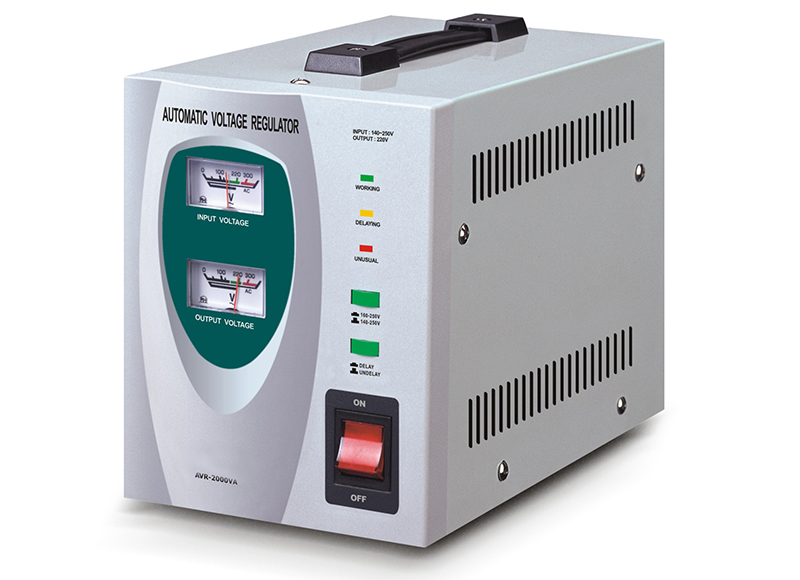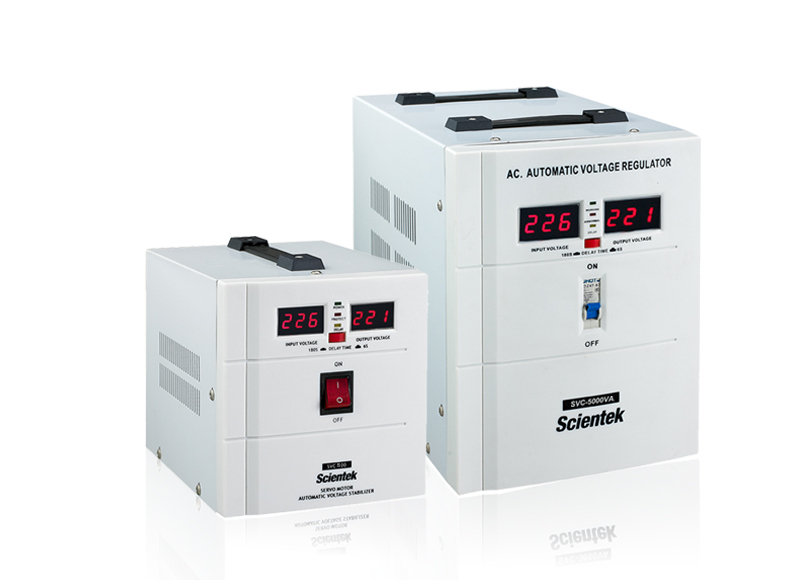A regulator is a device that stabilizes the output voltage. The voltage stabilizer is composed of a constant voltage, a control circuit, and a servo motor. When the input voltage or load changes, the control circuit samples, compares, and amplifies, and then drives the servo motor to rotate to change the position of the carbon brush of the voltage regulator. The coil turns ratio is automatically adjusted to keep the output voltage stable.
1. Single-phase compensating voltage stabilizer The figure below is a schematic diagram of a single-phase AC voltage stabilizer with compensation, which is mainly composed of a voltage regulating transformer T1 and a compensation transformer T2. As can be seen from the figure above, the coil on the low-voltage side of the compensation transformer is connected in series in the main circuit of the voltage stabilizer, so the energy output by this voltage stabilizer is mainly directly supplied to the output load through the low-voltage side coil of the compensation transformer.

The wire diameter of the secondary coil of the compensation transformer is made large enough, and the power of the voltage stabilizer can be made large. As long as the voltage regulating transformer T1 bears the difference between the input voltage and the output voltage, the allowable input range of the voltage regulator varies. The power of the voltage regulating transformer T1 is often a fraction of the actual capacity of the voltage regulator. This parameter determines the size of the voltage regulator transformer by the ratio of the regulator.
2. The single-phase SVC direct-voltage regulator is shown in the figure below, which is the working principle diagram of the single-phase SVC direct-voltage regulator. Its main working principle is as follows: point A is the input side of the single-phase regulator, point B For the output side. In fact, this type of voltage regulator directly regulated by a voltage regulator is made using the principle of an autotransformer.
Scope of application: Voltage stabilizers can be widely used in electronic computers, precision machine tools, computer tomography (CT), precision instruments, industrial and mining enterprises, oil fields, railways, construction sites, schools, hospitals, posts and telecommunications, hotels, scientific research and other departments Test equipment, elevator lighting, imported equipment and production lines and other places that require a stable voltage of power supply.
It is also suitable for users at the end of the low-voltage distribution network where the power supply voltage is too low or too high, and the fluctuation range is large, and the electrical equipment with large load changes. It is especially suitable for all voltage-stabilized power places that require high grid waveforms. The high-power compensating power regulator can be connected to thermal, hydraulic, and small generators.

Servo motor Automatic Voltage Regulator
Function introduction: Voltage stabilizer is a power supply circuit or power supply device that can automatically adjust the output voltage. Its function is to stabilize the power supply voltage that fluctuates greatly and does not meet the requirements of electrical equipment within its set value range so that various The circuit or electrical equipment can work normally under the rated working voltage.
The original power regulator relied on the jump of the relay to stabilize the voltage. When the grid voltage fluctuates, the automatic correction circuit of the power regulator is activated to activate the internal relay. Forcing the output voltage to remain near the set value, this circuit has the advantage of simple circuit, but the disadvantage is that the voltage regulation accuracy is not high and every time the relay jumps and shifts, it will cause an instantaneous interruption of the power supply and spark interference.
This greatly interferes with the reading and writing work of computer equipment, and it is easy to cause wrong signals on the computer, and in severe cases, it will damage the hard disk. High-quality small voltage stabilizers mostly use motors to drive carbon brushes to stabilize the voltage. This type of voltage stabilizer has little interference with electrical equipment and has relatively high voltage stabilization accuracy.